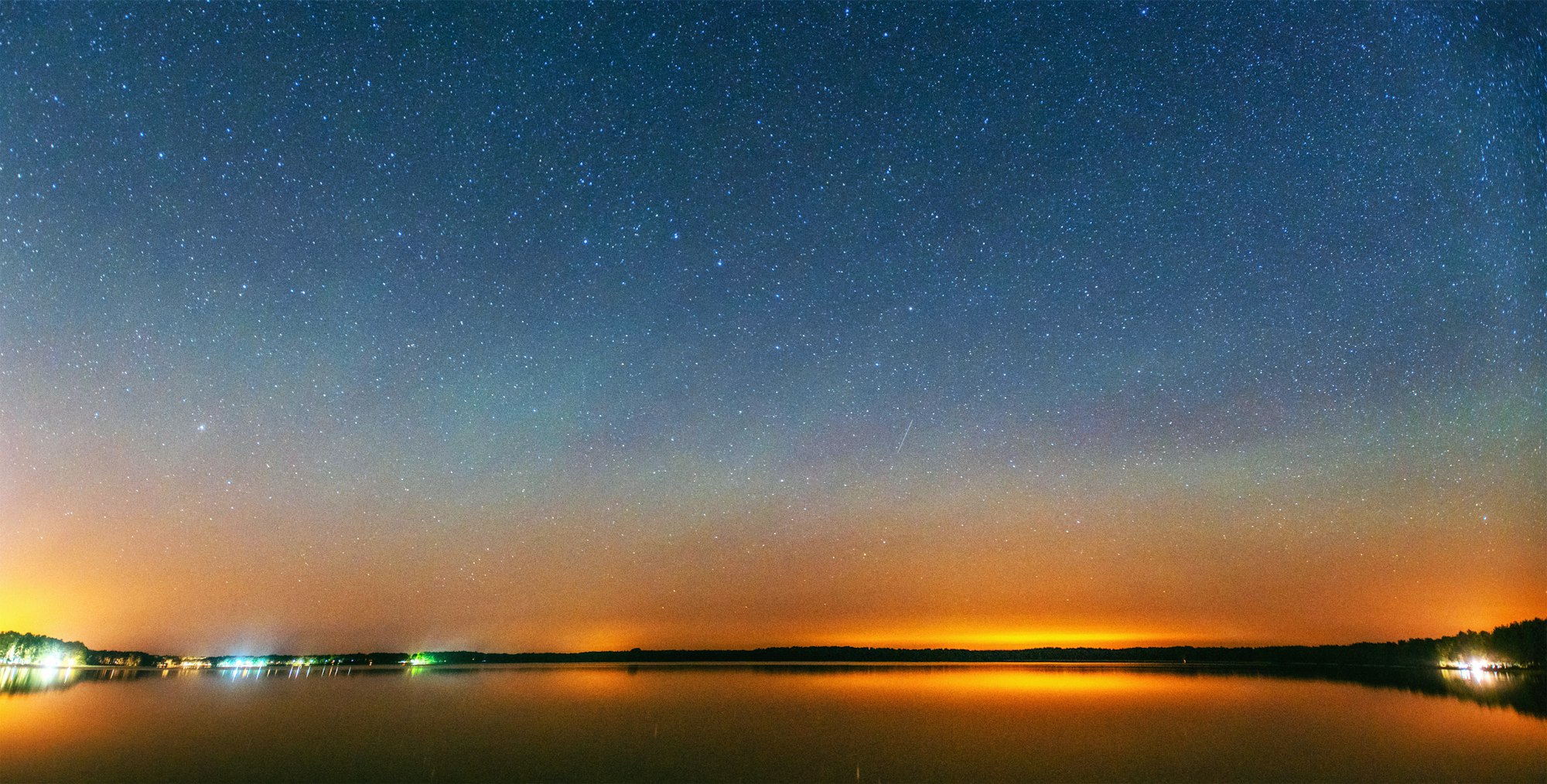As summer unfolds and night skies darken, a breathtaking celestial event awaits: the Perseid Meteor Shower. Known for its vibrant streaks of light, this annual spectacle draws stargazers across the UK. Discover the top locations that combine minimal light pollution with stunning landscapes, enhancing your meteor-viewing experience. Whether you’re a seasoned astronomer or a curious novice, these spots promise unforgettable views and a chance to be awed by nature’s grandeur. Get ready to witness the sky’s dazzling show this summer!
Overview of the Perseid Meteor Shower
The Perseid Meteor Shower is a spectacular celestial event that captivates skywatchers annually. This meteor shower phenomenon occurs when Earth passes through the debris left by Comet Swift-Tuttle. As tiny particles enter our atmosphere at high speeds, they burn up, creating bright streaks of light across the sky. This event holds significance not only for its visual appeal but also for its scientific importance in understanding cometary debris.
This might interest you : Discovering Guided Tours of Historic Saxon Churches: Your Ultimate Guide in the English Countryside
For those eager to witness this breathtaking display, the best viewing times are typically during the pre-dawn hours. The Perseid Meteor Shower is most active between July 17 and August 24, with the peak occurring around August 11-13. During this peak, observers can expect to see up to 60 meteors per hour under optimal conditions.
The frequency and visibility of meteor showers vary, but the Perseids are among the most reliable and visible. They are best viewed from the Northern Hemisphere, with dark, clear skies providing the ideal backdrop. For an unforgettable experience, find a location away from city lights and allow your eyes to adjust to the darkness for the best chance of spotting these cosmic wonders.
In the same genre : Top Spots to Experience Stunning Autumn Foliage in the Scottish Highlands
Top UK Locations for Viewing
For those seeking the best locations in the UK to experience the Perseid Meteor Shower, several renowned stargazing spots offer breathtaking views. One of the top destinations is the Brecon Beacons National Park in Wales. Known for its dark skies, it provides an ideal backdrop for meteor viewing. The park is easily accessible, with facilities such as car parks and viewing platforms.
Another excellent location is Galloway Forest Park in Scotland, celebrated as the UK's first Dark Sky Park. Here, visitors can enjoy the celestial display in a serene, natural setting, with minimal light pollution enhancing the experience. The park offers various trails and camping facilities for those wishing to extend their stay.
For a more secluded experience, consider heading to Exmoor National Park. This lesser-known spot is perfect for those who prefer a quieter setting. With its dark skies and ample open spaces, it's a hidden gem for meteor enthusiasts.
Remember, choosing a location with minimal light pollution is crucial for optimal viewing. Whether you prefer well-known parks or secret hideaways, the UK offers a plethora of options for an unforgettable stargazing adventure.
National Parks and Dark Sky Reserves
Exploring national parks in the UK offers a unique opportunity to experience the Perseid Meteor Shower in some of the most pristine natural environments. These parks are not only scenic but also host some of the best dark sky reserves for stargazing.
Overview of Dark Sky Reserves
Dark sky reserves are designated areas that maintain a natural night environment, free from light pollution. They are essential for astronomers and enthusiasts who wish to observe celestial events like the Perseid Meteor Shower. The UK is home to several of these reserves, where the skies are preserved to ensure optimal visibility.
Notable National Parks
Among the most notable are the Brecon Beacons National Park and Galloway Forest Park. These locations are celebrated for their commitment to maintaining dark skies. They offer facilities such as car parks and viewing platforms, making them accessible for visitors keen on witnessing the meteor shower.
Benefits of National Parks for Stargazing
National parks provide an ideal setting for stargazing due to their vast open spaces and minimal artificial lighting. This ensures that visitors can enjoy an unobstructed view of the night sky. Additionally, these parks often offer amenities like trails and camping areas, enhancing the overall experience for stargazers.
Tips for Stargazing
Embarking on a stargazing adventure requires some preparation to ensure the best experience. Here are some essential stargazing tips and best practices to help you make the most of your celestial observations.
Essential Equipment and Gear
To enhance your stargazing experience, consider bringing along some key equipment. A comfortable reclining chair or blanket will allow you to relax while watching the sky. Binoculars can be a great asset for viewing celestial objects more closely, while a telescope offers even more detail. Don't forget warm clothing and a red flashlight, which helps preserve night vision.
Finding the Best Viewing Spots
Choosing the right location is crucial. Even within designated stargazing areas, some spots offer better views than others. Look for areas with open skies and minimal obstructions like trees or buildings. Arriving early can help you secure a prime position.
Optimal Viewing Conditions
The quality of your stargazing experience depends heavily on viewing conditions. Clear skies are essential, so check the weather forecast before heading out. Additionally, the phase of the moon can impact visibility; a new moon offers the darkest skies. By aligning your stargazing plans with these conditions, you can maximise your chances of witnessing stunning celestial events.
Photography Tips for Meteor Showers
Capturing the Perseid Meteor Shower through astrophotography can be a rewarding experience. To achieve stunning visuals, consider these photography tips.
Recommended Camera Settings
For capturing meteors, use a camera with manual settings. Set the ISO between 1600-3200 to capture more light. A wide aperture, such as f/2.8, allows more starlight in. Opt for long exposures, typically between 10-30 seconds, to capture the movement of meteors across the sky. Adjust based on light conditions and experimentation.
Ideal Lenses and Tripods
A wide-angle lens, around 14-24mm, is ideal for stargazing photography. It captures expansive sky views, increasing the chance of including meteors. A sturdy tripod is essential to keep the camera steady during long exposures, minimising blur and enhancing image clarity.
Framing and Composition Tips
When framing, include a portion of the horizon to provide context and scale. Consider the rule of thirds to balance the composition. Positioning the camera to capture a radiant point, where meteors appear to originate, can enhance the shot. Patience and multiple attempts may be required, but the results are often worth the effort.
Safety and Preparation
Venturing out for a nighttime stargazing adventure requires careful planning and attention to safety tips. Ensuring nighttime safety is crucial for an enjoyable experience. Start by choosing a safe location, preferably one familiar to you, to avoid getting lost in the dark. Inform someone of your plans and expected return time for added security.
Essential Gear and Supplies
Packing the right gear is vital. Bring a flashlight, ideally with a red filter to preserve night vision, and carry extra batteries. Dress in layers to adapt to temperature changes, and include a hat and gloves for warmth. A first-aid kit is essential, along with a fully charged mobile phone for emergencies. Snacks and water will keep you energised throughout the night.
Preparing for Weather Changes
Weather can be unpredictable, so preparation is key. Check the forecast before heading out, and be ready for sudden changes in temperature or precipitation. Waterproof clothing and a tent or tarp can provide shelter if needed. By following these preparation for stargazing guidelines, you can focus on enjoying the celestial wonders safely and comfortably.
Apps and Tools for Tracking Meteor Showers
In the digital age, meteor shower apps have become indispensable for astronomy enthusiasts. These apps provide real-time data and forecasts, enhancing your stargazing experience. Popular options include SkySafari, Star Walk 2, and Meteor Shower Calendar, each offering unique features to help track celestial events.
Overview of Popular Apps
SkySafari is renowned for its detailed star maps and meteor shower predictions. It allows users to simulate the night sky from any location. Star Walk 2 offers an intuitive interface with augmented reality, making it easy to identify constellations and track meteor showers. The Meteor Shower Calendar app provides a straightforward schedule of upcoming showers, ensuring you never miss a spectacular display.
How to Use These Tools
To maximise your viewing experience, start by selecting an app that suits your needs. Use the app's location feature to determine the best times and directions for viewing. Many apps offer notifications for upcoming events, ensuring you're prepared.
Additional Resources
Beyond apps, online platforms like NASA's website provide comprehensive information on astronomy events. These resources complement your app usage, offering insights into the science behind meteor showers and enhancing your stargazing adventure.
Enhancing Your Viewing Experience
Elevate your stargazing adventure by incorporating stargazing activities that enhance the overall experience. Consider organising group viewing sessions, which not only make the event more enjoyable but also foster a sense of community. Sharing the experience with others can lead to engaging discussions and shared discoveries, making the celestial event even more memorable.
Suggestions for Group Viewing
Invite friends or family to join you for a night under the stars. Group viewing can be enriched with activities such as storytelling, where participants share myths and legends related to constellations and meteors. This adds an educational and entertaining element to the evening.
Activities to Pair with Meteor Shower Viewing
Pair your meteor shower viewing with complementary activities like picnics. Bringing along snacks or a warm drink can make the chilly night more comfortable. Additionally, consider setting up a telescope for everyone to take turns observing celestial objects up close.
Importance of Community Engagement
Engaging with a community during stargazing events enhances the experience by creating a shared sense of wonder and appreciation for the night sky. Community events often include expert talks or guided sessions, providing valuable insights and deepening the understanding of celestial phenomena.
Upcoming Astrological Events
As the Perseid Meteor Shower winds down, several other astrological events in the UK are on the horizon, offering more opportunities for skywatchers. The Orionid Meteor Shower peaks in October, originating from Halley's Comet. This celestial event is known for its fast meteors, leaving glowing trails. In November, the Leonid Meteor Shower provides another spectacle, with its potential for bright fireballs.
Preparing for Future Meteor Showers
To maximise your experience during these celestial events, preparation is key. Ensure you have a clear, dark sky location, away from city lights, and check weather forecasts for clear conditions. Equip yourself with essentials like a reclining chair, warm clothing, and a red flashlight to maintain night vision. Familiarise yourself with the shower's radiant point to enhance your viewing.
Resources for Staying Informed
Staying updated on astronomical occurrences is crucial for planning your stargazing activities. Apps like SkySafari and Star Walk 2 offer real-time data and alerts for upcoming events. Websites such as NASA's provide detailed information and predictions. Engaging with local astronomy clubs can also offer insights and community events, enriching your stargazing experience.
















